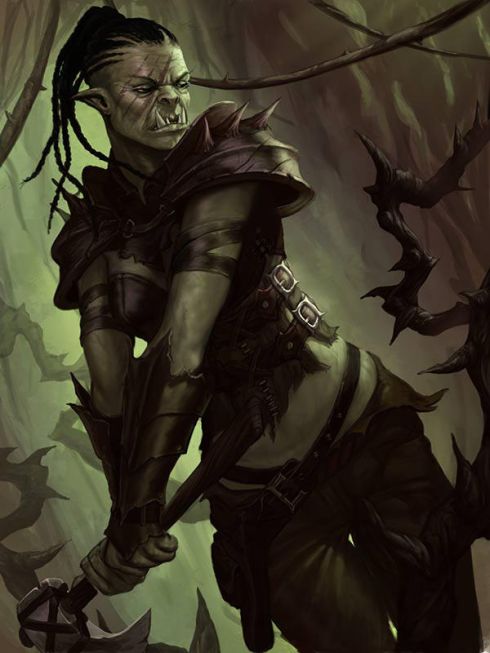Half-orc Race & Physiology
Half-orc race & physiology describes a character born from the union of an orc father and either a human or dwarvish mother. This distinct heritage sets them apart as outsiders, as orc women cannot conceive offspring in the same manner, and no other race can reproduce with orcs. Notably, a dominant half-orc strain results from this union, ensuring that if a half-orc mates with a human, dwarf, or orc, the half-orc lineage prevails in their descendants.
The single significant conglomerations of half orcs exists in a land called Cumana, the sanjak of which is located near the Sea of Azov, east of the Dneiper bend. Known collectively as "Cumani" (human-orc) or "dworkin" (dwarvish-orc), these peoples live side by side in peace.
Cumani
Sharing a connection with the human Pechenegs, who vanished as a distinct people in the 12th century. Originating from lands north of Lake Balkhash in Turkestan, the Cumani began migrating westward after the 800s CE, displacing the Khazars, Pechenegs and Oghuz Turks in the valleys of the Volga and Don rivers. They conducted raids on the Kiyevans, Hungary and the Byzantine Empire during the 11th century.
While they once held a vast territory extending from the lower Dnieper to the Urals, the Mongols' arrival led to the Cumani's dispersal. They endured two subsequent centuries under Mongol rule, ultimately regaining control of their present-day lands between 1420 and 1441. Since, the Cumani have frequently defended their homeland against Russians, Ottomans and Kiyevans, often emerging victorious after hard-fought battles.
Cumani half-orcs are characterized by their robust and muscular physique, often accompanied by loose skin that forms folds on their necks, upper arms and bellies. This distinctive physical trait is something many Cumani half-orcs prefer to conceal, especially when in the presence of humans, as it's commonly regarded as disconcerting and even unattractive by human observers. Their features include elevated nostrils reminiscent of gorillas and prominent lower jaws, typically featuring lower incisors that may be visible even when their mouths are closed.
Dworkin
The Dworkin originally hailed from the southern lands of modern Mugodstan, where they persist as a minority group. While sharing physical traits with other half-orcs, they exhibit numerous dwarvish customs. Their physical characteristics, such as the shape of their hands and the absence of a typical orcish nose found among the Cumani, set them apart. The Dworkin embarked on westward migrations, driven by the Mongols, occurring intermittently between the 1190s and 1230. They eventually united with the Cumani during this period and, like their Cumani counterparts, submitted to Mongol rule under Batu Khan in 1238-39. Today, most Dworkin inhabit the Het of Donbass in eastern Cumana.
Dworkin half-orcs are easily identifiable by their distinctive characteristics, including deep-set eyes and flat, broad noses. They are also known for their stiff, spine-like beards. While they don't have loose skin around their necks, this feature is still present on their upper arms, bellies and upper thighs.
Joint Characteristics
All half-orc males typically have an average height ranging from 5 feet 3 inches to 5 feet 8 inches, which is notably shorter than their orc ancestors. On the other hand, females tend to be 3 to 4 inches shorter than their male counterparts. Despite their relatively shorter stature, half-orcs possess significant musculature, often exceeding that of humans, and enjoy robust health. Their weight typically falls in the range of 140 to 180 pounds.
Most have straight and somewhat oily hair that spans a spectrum from sooty and jet black to bluish black. Common eye colors among them include turquoise and hazel. However, within their community, individuals with pink eyes are often considered the most attractive. These may be accompanied by green or grey flecks; occasionally the pinkness borders on nearly white.
Advantages
Player characters choosing this race adjust their ability stats by +1 to strength and +1 to constitution, while giving a -2 penalty to charisma. They have a limited range of character classes available to them, being able to train as assassins, clerics, fighters and thieves.
Infravision. Half-orcs possess infravision equal to that of any other creature.
See also,
Aging
Bestiary
Character Background Generator
Character Race Options
Character Race Relations
Player Characters
Tribes of Cumana
